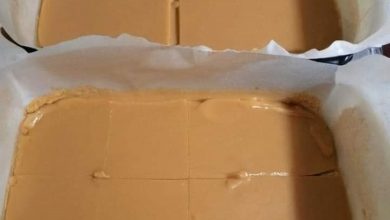
ADVERTISEMENT
The Timeless Craft of Knitting: A Journey Through History with Vintage Knitting Needles
Introduction
Knitting, a craft that dates back thousands of years, is more than just a method of creating fabric—it’s a symbol of creativity, community, and continuity across generations. Central to this timeless craft are the knitting needles, tools that have evolved in design, material, and significance over time. The image of vintage knitting needles you provided opens a window into the past, offering a glimpse of how this simple yet powerful craft has endured and adapted through the ages.
The Origins of Knitting
The history of knitting is as intricate as the patterns it produces. While the exact origins are debated, evidence suggests that knitting began in the Middle East and spread to Europe via trade routes as early as the 5th century. The earliest known knitted items were not the familiar sweaters or scarves of today, but rather fine, ornate socks found in Egyptian tombs, made with a technique known as “nålebinding,” a precursor to modern knitting.
Knitting needles, originally crafted from bone, ivory, or wood, were essential tools in these early stages. These early needles were often thick and rudimentary, reflecting the practical nature of knitting at the time—creating garments for warmth and protection.
Evolution of Knitting Needles
As knitting spread across Europe and gained popularity during the Renaissance, the tools of the trade evolved. Knitting needles became more refined, often made from fine woods, metals, and eventually plastics. The design of knitting needles also adapted to accommodate various types of yarn and the increasingly complex patterns that were being developed.
The vintage knitting needles depicted in the image are likely from the early to mid-20th century, a period when knitting was experiencing a resurgence, particularly during the World Wars. During these times, knitting was not just a hobby but a patriotic duty. Women (and sometimes men) would knit socks, scarves, and other items for soldiers, and the tools they used were cherished items, often passed down through generations.
ADVERTISEMENT
These vintage needles, with their simple yet elegant design, harken back to a time when knitting was a common skill, taught in schools and practiced in homes across the world. The smooth, worn surfaces of the needles suggest years of use, creating items of warmth, comfort, and love.
The Cultural Significance of Knitting
Knitting has always held a special place in culture, serving both functional and symbolic purposes. In many cultures, knitting is seen as a communal activity, bringing people together in times of both celebration and hardship. Knitting circles, where groups of knitters gather to work on their projects, have been a staple in communities for centuries, serving as spaces for sharing stories, passing on traditions, and fostering a sense of belonging.
The act of knitting itself has often been imbued with symbolism. During the French Revolution, for example, the “tricoteuses” (knitting women) were notorious for knitting at the base of the guillotine, their needles clicking in rhythm with the beheading of the aristocracy. In literature, knitting has been used as a metaphor for fate, with the needles representing the threads of life being woven together.
Knitting in the Modern Era
In recent years, knitting has experienced a revival, spurred by a growing interest in slow fashion, sustainable practices, and handmade crafts. What was once considered a pastime of the elderly has become popular among younger generations, with knitting groups, online communities, and even “yarn bombing” (a form of street art involving knitted or crocheted displays) gaining traction.
Modern knitting needles, available in a wide range of materials and designs, reflect the diversity and creativity of today’s knitters. However, there is a special charm in using vintage needles, like those in the image, which connect the knitter to the generations of crafters who came before. These needles carry the stories of their previous owners, the projects they created, and the times they lived through.
ADVERTISEMENT
The Meditative Nature of Knitting
Beyond its cultural and historical significance, knitting offers numerous personal benefits. The repetitive nature of knitting—wrapping yarn around needles, creating stitch after stitch—has been shown to have a meditative effect, reducing stress and anxiety. For many, knitting is not just a hobby, but a form of therapy, providing a sense of calm and accomplishment.
Vintage needles, with their smooth, worn surfaces and history of use, enhance this experience. The knowledge that these tools have been used for decades, perhaps even by multiple generations, adds a layer of depth to the practice, making each stitch feel connected to a larger tapestry of human experience.
Conclusion
The journey of knitting, from its ancient origins to its modern revival, is a testament to the enduring appeal of this simple yet profound craft. Vintage knitting needles, like the ones depicted in the image, serve as reminders of this rich history, carrying with them the stories of the past and inspiring future generations to pick up the needles and continue the tradition.
As we move forward in an increasingly digital world, the tactile, hands-on experience of knitting provides a valuable connection to our roots. Whether you’re a seasoned knitter or just starting out, consider the legacy you’re continuing every time you pick up your needles. In each project, you’re not only creating something new but also contributing to a craft that has warmed bodies and hearts for centuries.
In the end, knitting is more than just making fabric; it’s about weaving together the threads of history, culture, and personal expression—one stitch at a time.
ADVERTISEMENT
This article combines historical context, cultural reflection, and modern insights to create a unique narrative centered around vintage knitting needles. If you have any specific areas you’d like to explore further or other ideas, feel free to let me know!




